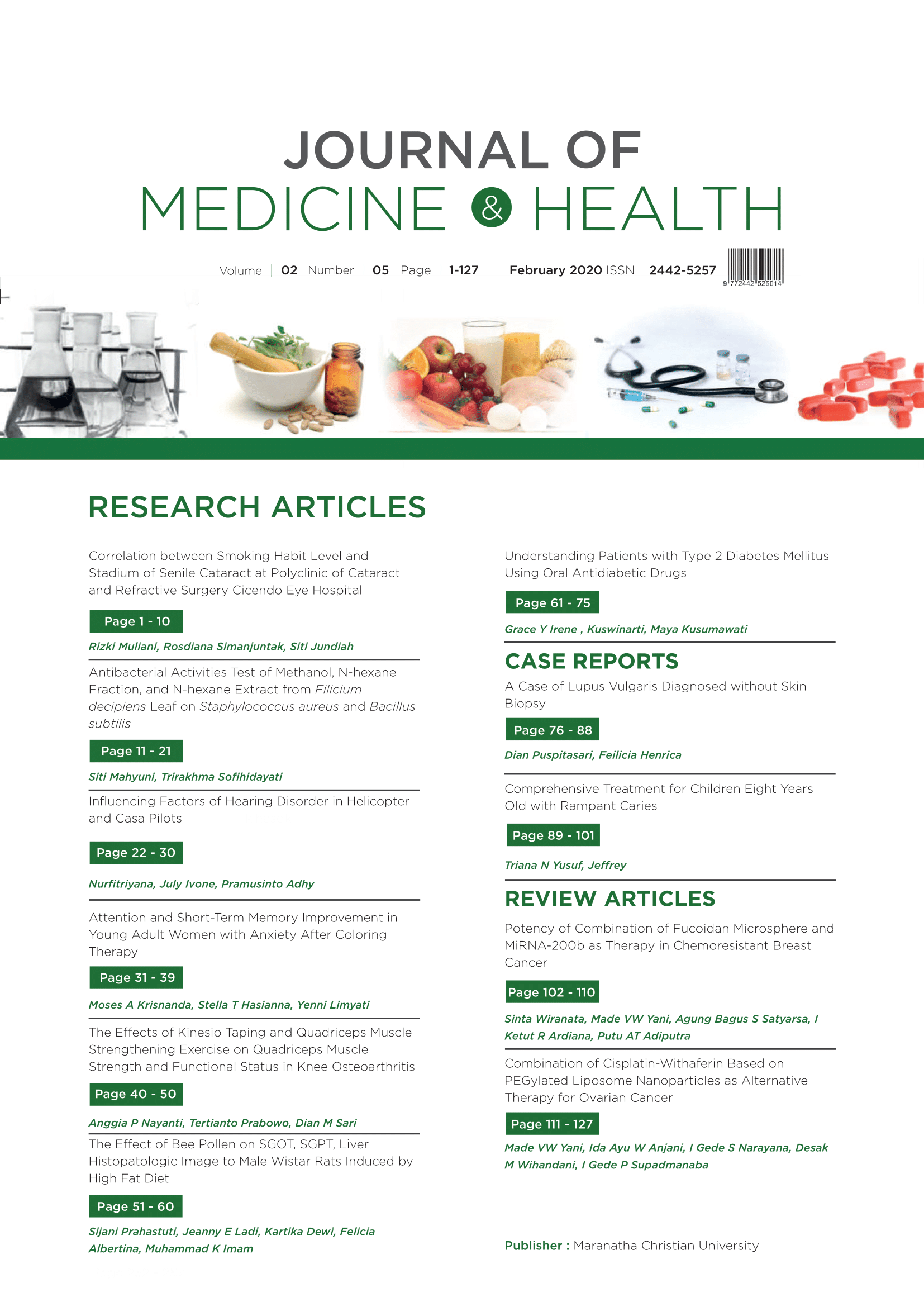Kasus Lupus Vulgaris yang Didiagnosis Tanpa Biopsi Kulit
DOI:
https://doi.org/10.28932/jmh.v2i5.1839Abstrak
Lupus vulgaris merupakan salah satu bentuk tuberkulosis kutis pada individu yang telah tersensitasi dan memiliki delayed type hypersensitivity tinggi terhadap tuberkulin. Kriteria absolut penegakan diagnosis tuberkulosis kutis adalah adanya hasil kultur M. tuberculosis yang positif, inokulasi pada marmot atau dengan pemeriksaan polymerase chain reaction (PCR). Pada laporan ini dipaparkan sebuah kasus lupus vulgaris pada seorang wanita umur 32 tahun yang didiagnosis tanpa biopsi kulit tetapi berdasarkan gejala klinis, therapeutic trial, tes interferon-gamma release assay (IGRA) dan beberapa pemeriksaan penunjang lainnya. Gambaran klinis di daerah kulit wajah dan tangan kiri tampak plak eritem dengan skuama yang pada pemeriksaan diaskopi memberikan gambaran “apple jelly”. Respon terapi terhadap obat anti tuberkulosis (OAT) dalam 1 bulan terlihat membaik, berupa regresi dari kelainan kulitnya. Pemeriksaan kultur, PCR dan pemeriksaan histopatologi tidak dapat dilakukan karena pasien menolak dilakukan biopsi kulit. Pasien alergi terhadap obat pirazinamid dan etambutol, sehingga pada fase awal pasien diterapi dengan dosis harian Rifampisin 450 mg, isoniazid (INH) 300 mg dan Levofloksasin 500 mg, lalu pada fase lanjutan dengan Rifampisin 450 mg dan INH 450 mg seminggu 3X sampai dengan 1 tahun. Terapi pada kasus ini memberikan hasil yang baik. Kata kunci: tuberkulosis; lupus vulgaris; therapeutic trialUnduhan
Data unduhan belum tersedia.
##submission.downloads##
Diterbitkan
2020-02-27
Cara Mengutip
1.
Puspitasari D, Henrica F. Kasus Lupus Vulgaris yang Didiagnosis Tanpa Biopsi Kulit. J. Med. Health [Internet]. 27 Februari 2020 [dikutip 13 Desember 2025];2(5). Tersedia pada: http://114.7.153.31/index.php/jmh/article/view/1839
Terbitan
Bagian
Articles
Lisensi
Authors who publish with this journal agree to the following terms:
- Authors retain the copyright and grant the journal right of first publication with the work
simultaneously licensed under a Creative Commons Attribution-NonCommercial 4.0 International License that allows others to share the work with an acknowledgement of the work's authorship and initial publication in this journal. - Authors are able to enter into separate, additional contractual arrangements for the nonexclusive distribution of the journal's published version of the work (e.g., post it to an institutional repository or publish it in a book), with an acknowledgement of its initial publication in this journal.
 This work is licensed under a Creative Commons Attribution-NonCommercial 4.0 International License.
This work is licensed under a Creative Commons Attribution-NonCommercial 4.0 International License.

















